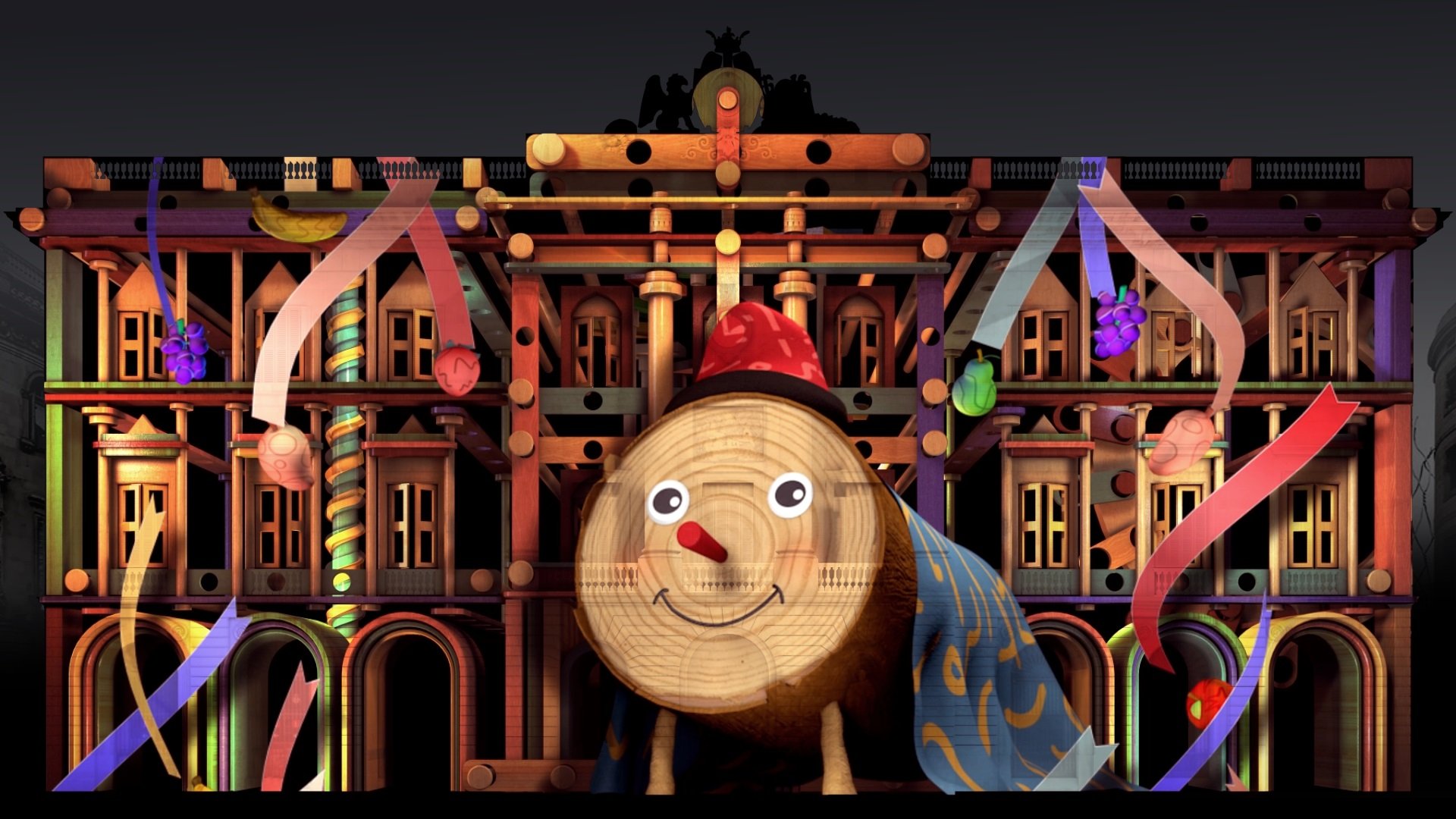The Plaça Sant Jaume will experience a third year without a nativity scene - at least of the physical type which have been erected annually in the central Barcelona square during the festive season. In 2020 there was none due to the restrictions imposed for the pandemic - although there were protests over its absence - and in 2021 the Barcelona city council opted for an "artistic intervention", of elements mounted on facades and balconies which ended up having technical problems. With these precedents, this 2022, the municipal government has opted for a technological nativity scene that will take the form of an interactive video projection, without any objects at all in the square - neither traditional figurines nor the more avant-garde installations of some years - and, for obvious reasons, only visible during the hours of darkness in the evening.
This virtual installation, designed by Onionlab, will be visible on the facade of Barcelona city hall from December 16th until January 5th, starting at 5:30pm and ending at 10pm or at 11pm depending on the day, which means that throughout the morning and early afternoon there will be nothing to see - apart from the Christmas tree in one of the corners of the square - in the square which traditionally has been a place of festive season pilgrimage for Barcelona residents. The deputy mayor responsible for culture, Jordi Martí, downplayed this difference by pointing out that in other years "it was also in the evening when there were most people" and recalling that with nativity scenes "the light always makes them more spectacular, this also happens with the ones we make at home".

However, the 2022 digital nativity scene will be interactive, as the public will be able, through mobile phones and QR codes, to propose scene changes or include their own first name - as long as it appears in the INE database - in the figurines of the nativity scene. Among the scenes that can be seen in the video projections will be traditional elements, such as the Santa Llúcia market, Christmas lights, the nativity scene, Catalan characters like the cagatió or "shitting log" and l'home dels nassos - "the man with the noses", traditional gastronomy and the Three Kings, with the presentation adapted to the festive calendar - the cagatió can be seen until the day of Sant Esteve, December 26th, when it will be replaced by the reis- the Three Kings - who are due, according to tradition, to arrive on January 5th.
"The nativity scene always generates controversy"
With a budget of around 100,000 euros - half of what it cost in 2021 - the 2022 nativity scene offers, according to Martí, new possibilities: "The nativity scene always generates controversy but it's never been possible for people to stir the pot", said the councillor, who invited "everyone in Barcelona to put their own stamp on it". Of course, it will be visible from the 16th, also much later than on other occasions. In this respect, Martí affirmed that the intention this year is "to bring it closer to the more traditional dates of the nativity scene", which were also when "there was most presence of people". In any case, it remains to be seen how the public will reaction to an empty public square that only begins to have some activity at dusk, from half past six.
New Year's Eve will include a drone show
As for the city's major New Year's Eve celebration, it will again take place on Avinguda Maria Cristina, with a show by the Provençal company Groupe F, divided into two parts and combining light, pyrotechnics, music, water and, for the first time, more than 200 drones, all with a message based on peace, to put an end to a year in which war has broken out in Europe. As explained by Martí, with the celebration and the traditional bells, the aim will be to "celebrate fellowship between peoples". In the first part different cultures of the planet will be evoked and in the second a metaphor will be made of humanity's communication with the cosmos. Each part will last twelve minutes.

The Three Kings' parade: touches of the Raval
As for the cavalcada dels reis - the festive parade on the evening of January 5th when children and families gather to see the arrival of the Three Kings - the main new feature this year will be the change of route, since roadworks on Via Laietana mean it will not go up that street, although the municipal government hopes to be able to recover the usual route when the works are finished. Instead of going up Via Laietana and crossing Plaça Catalunya, the parade will go up the Avinguda Paral·lel, which will bring it closer to the Raval, which will, in fact, be the protagonist because the parade will include floats based on the stage design of the participatory opera La Gata Perduda, starring residents of the Raval neighbourhood in collaboration with the Gran Teatre del Liceu. This year there will also be new floats for the Three Kings themselves, twenty metres long. And a tradition that will return is the distribution of candy - suspended during Covid. Seven tonnes of sweets will be tossed out from the floats for children and bystanders to scoop up.

